Arara of Volta Grande
- Self-denomination
- Where they are How many
- PA 293 (Verthic, 2019)
- Linguistic family
The Arara of Volta Grande do Xingu have experienced contact with European colonizers since the eighteenth century, including the advance of the extractive economy in the region, the constant conflicts with other indigenous groups, and the opening of the Trans-Amazonian highway, which led to waves of new immigrants looking for land to settle and made access much easier for the resource extraction industry. These regional impacts had a profound impact on the socioeconomic, cosmological and political relations and ways of life of the Arara, as well as their relations to the region and with other ethnic groups living nearby.
According to the accounts of the oldest generation, the Arara of Volta Grande do Xingu are descendants of the Arara of the Bacajá River. Their kinship with the Arara of the Iriri river (known as simply the Arara or as the Arara of Pará), if it existed, was in the distant past. One of the connections between past history and recent history is the chief of the group, the sexagenarian Leôncio Ferreira do Nascimento.
The arrival of the mega-project for the Belo Monte Hydroelectric Plant has had a huge environmental, economic, social and cultural impact, causing the most invasive changes to the form in which the Arara conceive and conduct their lives.
The reduced flow along the Volta Grande (Big Bend) of the Xingu caused by the hydroelectric project will, the Arara predict, provoke the encantados to move to other regions.
Even though they disagree with what is happening in the region right now, they await with a degree of scepticism for the programs and projects listed in the Basic Environmental Plan (Plano Básico Ambiental - PBA). The Basic Plan is due to be implemented by the company responsible for the project, Norte Energia S/A, with the declared intention of alleviating the damage caused by many of the profound changes taking place.
Name
According to the research by Nimuendajú (1948), they appeared in eleven different places, at different times and with a variety of names, like Arara, Pariri, Timiren and Yaruma, which may indicate that they were distinct groups that formed subgroups, possibly isolated and independent of one another.
The Arara of Volta Grande do Xingu became known by the name ‘Maias’ by their neighbours. They do not use this name and recognize themselves to be descendants of the Arara of the Bacajá. According to the group, the name Maia belonged to a white colonist who lived in the region and whose name after his death was given to the waterfall located close to the village. The Arara are the only people to have lived close to this waterfall.
Language
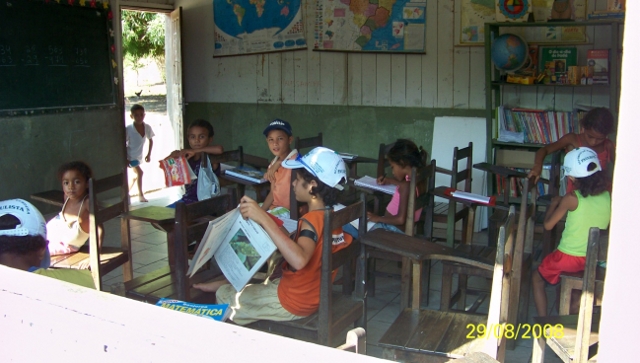
According to Nimuendajú (1948) and H. Coudreau (1977), the Arara of the middle Xingu spoke a Carib language. The Arara of Volta Grande do Xingu speak Portuguese and recognize and speak the odd word of the maternal language, which fell into disuse, left in the memory of Leôncio, the group’s chief, who “through carelessness” did not learn the language.
The studies by the linguist Isaac de Souza of the language of the Arara of Laranjal and Cachoeira Seca (known as the ‘Arara’ or the ’Arara of Pará’) indicate that the links between the former peoples and the Arara of Volta Grande are very distant.
The contact with non-indigenous colonizers was intense and severely disrupted the group’s social organization. Consequently the Arara are now seeking to recover their language through cultural exchange with the Arara of Cachoeira Seca. In 2010 they welcomed the visit of two families from the Arara of Pará in Wangã village. These families stayed for six months before returning to TI Cachoeira Seca. They intend to repeat this experience in the future.
Location and Access
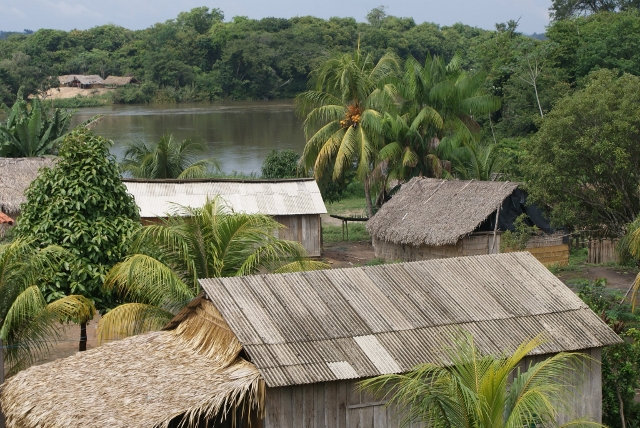
The migration of the first Arara families who gave rise to Leôncio Arara’s group took place from the Bacajá River to the Xingu in the mid nineteenth century.
The Arara in question are located on the lower course of the Xingu river, in an area known as the Volta Grande (Big Bend) between the Bacajá and Bacajaí rivers (hence the name given to them: the Arara of Volta Grande do Xingu). They live close to the confluence between the Xingu and Bacajá rivers, in the Arara da Volta Grande do Xingu Indigenous Land. The local rivers are filled with rapids and islands. The islands are fundamental to the life of the Arara, since they use them to fish and hunt.
In terms of access to Wangã village, the Arara boats – paddled canoes – take seven or eight hours to reach the city of Altamira in the summer. In the winter they can complete the same route in less than seven hours. This access route has been used since their ancestors migrated to the Xingu River in the nineteenth century. The route has also been undertaken in local boats with outboard motors, taking around three hours to complete the same journey.
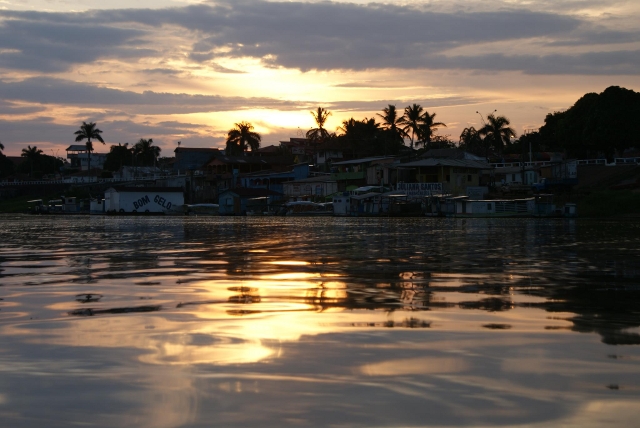
Traders undertake journeys more frequently between Altamira, Ilha da Fazenda, Garimpo do Galo or Garimpo do Itatá to carry out business. Since 2002 following the beginning of the land recognition process and the resumption of studies and discussions on the construction of the Belo Monte hydroelectric dam, commercial and personal transportation has extended as far as Wangã village. As a result, access between the village and the centre of Altamira has intensified.
The Xingu River was until recently the only communication and transportation route available. However following the environmental impact study, Indigenous Component of the BR-230 – Trans-Amazonian Highway, the community began to indicate another possible solution, namely the Surubim branch road. The road is located to the west of the indigenous land and extends as far as the Trans-Amazonian highway at the 100 km point. This access route is used by farmers who came to an agreement with the Arara for both parties to use the branch road without conflicts. This access and communication route is the solution found by the Arara to avoid being limited to transit on the Xingu River. The latter will be modified hugely with the construction of Belo Monte Plant, since the region of the Volta Grande of the Xingu forms part of the Reduced Flow Section of the river. Hence the Arara have looked for other solutions to avoid becoming hostage to the access proposed by the dam construction project.
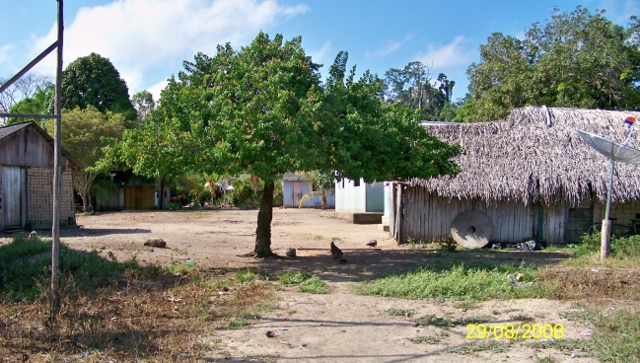
The Arara da Volta Grande do Xingu Indigenous Land was declared to belong permanently to the Indians in January 2011. Official recognition of this land is one of the conditions for the construction of the Belo Monte Plant.
Contact History
Ehrenreich (1891) mentioned that the neo-Brazilians called these small groups, when they appeared, the Arara and, without any proof of the fact, were considered to be identical to the groups of the same name on the Madeira River and to the Yuma who lived on the tributary on the right shore of the Purus River. The same author adds that the Juruna say that they lived on the affluents of the right shore of the Xingu river, and that they were displaced by the advance of the Kayapó. This period was followed by years of sporadic contacts with rubber workers, a time when they numbered 343 people, according to the researcher’s data, without counting children. It is possible that persecutions by these invaders pushed them into deeper forest where they lived in ever dwindling numbers. No other demographic data is available, though Leôncio (1965) and Ananum (1973) state that the groups were small and had never been very large.
Nimuendaju (1948) reports that the Arara were seen for the first time on the “(...) lower Xingu in 1853 and subsequently disappeared into the forest (...) they were populations of the deep forest rather than the river shores (...).” The accounts by Leôncio and Ananum both state that the group was made up of small families. The group that migrated from the Sucuriju creek to the Xingu River is small and made up of grandparents, parents, children, aunts and uncles, all descendants of two sisters, Tjelj and Tintim Arara.
The migration of the first Arara families that gave rise to Leôncio Arara’s group was from the Bacajá River to the Xingu River in the mid nineteenth century. The oldest member of the Arara, Leôncio’s great uncle, now deceased, recounted in 2004 that his grandmother Tjeli (Yarunu) and Teodora, his mother, had left a place called Morro Pelado, on the Bacajá river, travelling down the river in bark canoes until reaching the Xingu river, stopping at a place known as Barra do Vento – an island known today by the same name.
Ananum recalls that the elders said that they stayed on the island only for a short time, since rubber tappers who lived nearby forced them to continue their journey until they reached the place called Samaúma, on the Xingu River. The rocks found on this site possess signs and symbols, which marked the area in their memories. The location is a record of occupation, possibly long before the presence of the Arara.
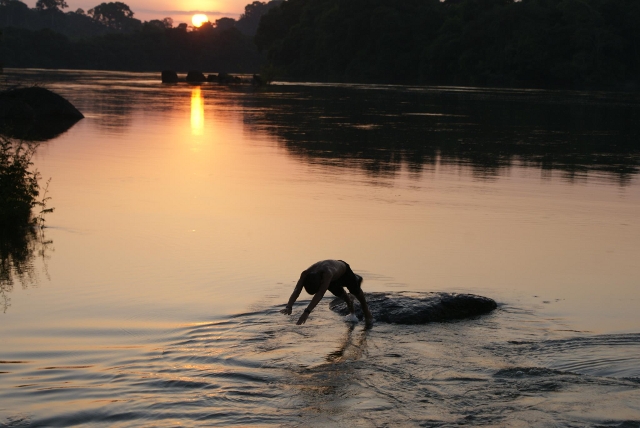
Leôncio also tells this history but from the viewpoint of another part of the group. He says that his grandfather Pirá (Arara) and his grandmother Pipina (Juruna), the parents of his mother Firma, moved from their maloca on the left shore of the Sucuriju creek to the Xingu River. “On the Sucuriju and Queiroz creeks, downriver of Potikrô, was the maloca of the elders, they migrated down the Xingu river and settled at Chico Tintim, close to the maloca of Muratu,” [mentioned by Coudreau as one of the leaders of 18 Juruna malocas], who “lived in a place they called Muratá, today known as Deserto (...), Pirá’s group was downriver from Deserto.” This voyage was made by both Arara and Juruna Indians. Dry land and islands were occupied in this region, giving rise to a new political and sociocultural organization.
Social Organization
The ‘chief’ of the village is Leôncio Ferreira do Nascimento, the link between past history and recent history. He prepared his grandson José Carlos Ferreira da Costa Arara to lead their extended family group. As a leader he deals with questions of a political nature in the fields of education, healthcare, land and other situations that may emerge. However his final decision is based on a consultation of the community. In so doing he ensure the respect and approval of the nuclear families. Hence José Carlos manages to lead the group with the autonomy conferred to him.
It is worth observing that the migration from the Bacajá River to the Xingu River and the huge changes occurring in the second half of the twentieth century, the population number as well as the cultural and socioeconomic structures stabilized. This modification enabled the reorganization of the physical space of the village, as well as favouring physical and cultural reproduction.
Population
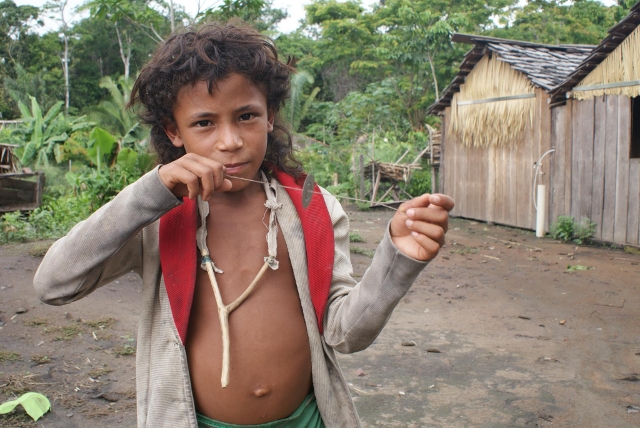
In his accounts Ananum stated that at the time of the migration from the Bacajá river to the Xingu river in the nineteenth century, only 20 of the 50 people who made the journey – including men, women and children – arrived at the Xingu. Hunger and influenza decimated much of the group.
In 2009/10 the village with 17 families was distributed as follows: 16 adult men (between 16 and 70 years), 27 adult women (16 to 73 years), 13 young men (14 years), 13 young women (12 years), and finally 43 children (25 boys and 18 girls) making a total of 112 individuals. These were the families that took part in the studies undertaken between 2009/2010 to diagnose the changes that will take place with the construction of Belo Monte Hydroelectric Plant and the asphalt surfacing of the BR-230 Trans-Amazonian highway.
Productive Activities
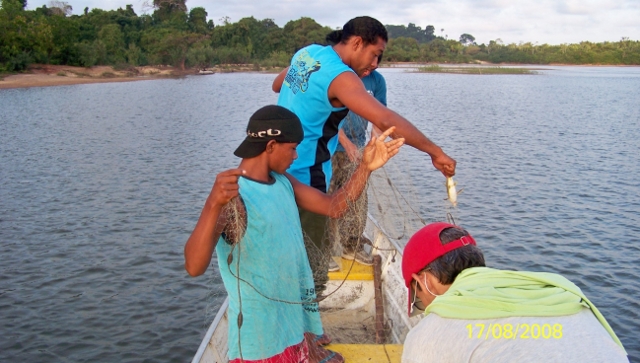
The Arara live from the Xingu River, the Bacajá and the forest, which offer them economic, social, physical and cultural survival. The alterations that have taken place in the region have so far not been enough to change radically the customs and traditions of land cultivation, foraging and river use. The relations that the Arara maintain with the land and the environment have been perpetuated over this time. The same will not be able to be said of the arrival of Belo Monte.
The Arara have an organized calendar of activities that are developed throughout the year but are not always able to ensure enough food for their families in the village. Fishing, hunting and manioc flour production are the only activities practiced all year round. Hence they spend their time on other work that needs to be done and that generates a financial income.
In the months of January, February and March they collect Brazil nuts, fish, hunt and make flour. In Wangã village the flour is made for consumption and shared with those who have not produced enough for themselves. Any surplus they negotiate with non-indigenous neighbours or take to the market in Altamira to sell for R$15 per container or R$60 per bag of sixty kilos. Flour may be bartered for other products depending on needs.
In April they prepare the swiddens to plant beans, which are harvested in the middle of the year. In June as well as hunting, fishing and producing flour, the Arara harvest maize and rice, which continues until July. Still in July they clear the swidden (weeding or felling primary forest for the new swidden) which continues until October. The forest cover is felled in August and burnt in September after drying. While some burn the felled trees, others clear the area, removing branches to make space for planting, and weed. In October the remaining scrub is burnt. In November the Arara begin to plant rice, manioc, yam, potato, sweet manioc, banana, watermelon and pineapple, which continues to the end of the month or into December.
Hence the staple diet revolves around the fish caught in the Xingu and Bacajá rivers, manioc flour produced in the village and some products obtained in the small markets of Ressaca village, Fazenda Island or from river traders. The main source of monetary income comes from the sale of crates of Brazil nuts and acari fish, or short-term hire work to clear forests for neighbours. The summer months – June to November – are considered the most abundant in the village, and the winter months – December to May – are considered months of scarcity, which requires the careful use of any money that enters. It is important to note that not all the families receive money, unless they carry out some of these remunerated activities.
Sources of information
- COUDREAU, Henri. Viagem ao Xingu - 1886. São Paulo: Editora Universidade, 1977.
- IBGE. Mapa – Etno-Histórico do Brasil (1964). 1981.
- Parecer Técnico nº 21 – Análise do Componente Indígena dos Estudos de Impacto Ambiental UHBM. CMAM/CGPIMA-FUNAI,Brasília, 2009.
- PATRÍCIO, M. M. Relatório Circunstanciado de Identificação e Delimitação da T.I. Arara da Volta Grande do Xingu. CGID/FUNAI, Brasília, 2005.
- _______. et all. Estudo Impacto Ambiental - Componente Indígena da Terra Indígena Arara da Volta Grande do Xingu (VGX). Pará, 2008/2009.
- _______. et all. Estudo Impacto Ambiental da BR-230 Transamazônica - Componente Indígena da Terra Indígena Arara da Volta Grande do Xingu (VGX). Pará, 2010.
VIDEOS
Arara boy from the Xingu sends a message to Dilma
Source: Movimento Xingu Vivo para Sempre
A nine-year old boy from the Arara da Volta Grande village, one of those that will be most affected by the construction of the Belo Monte Dam on the Xingu river, makes an appeal to President Dilma Rousseff to preserve his way of life and his future. <object height="394" width="700"> <param name="movie" value="http://www.youtube.com/v/UN_MLLwN2XM?version=3&hl=pt_BR&rel=0"/> <param name="allowFullScreen" value="true"/> <param name="allowscriptaccess" value="always"/><embed allowfullscreen="true" allowscriptaccess="always" height="394" src="http://www.youtube.com/v/UN_MLLwN2XM?version=3&hl=pt_BR&rel=0" type="application/x-shockwave-flash" width="700"/></object>